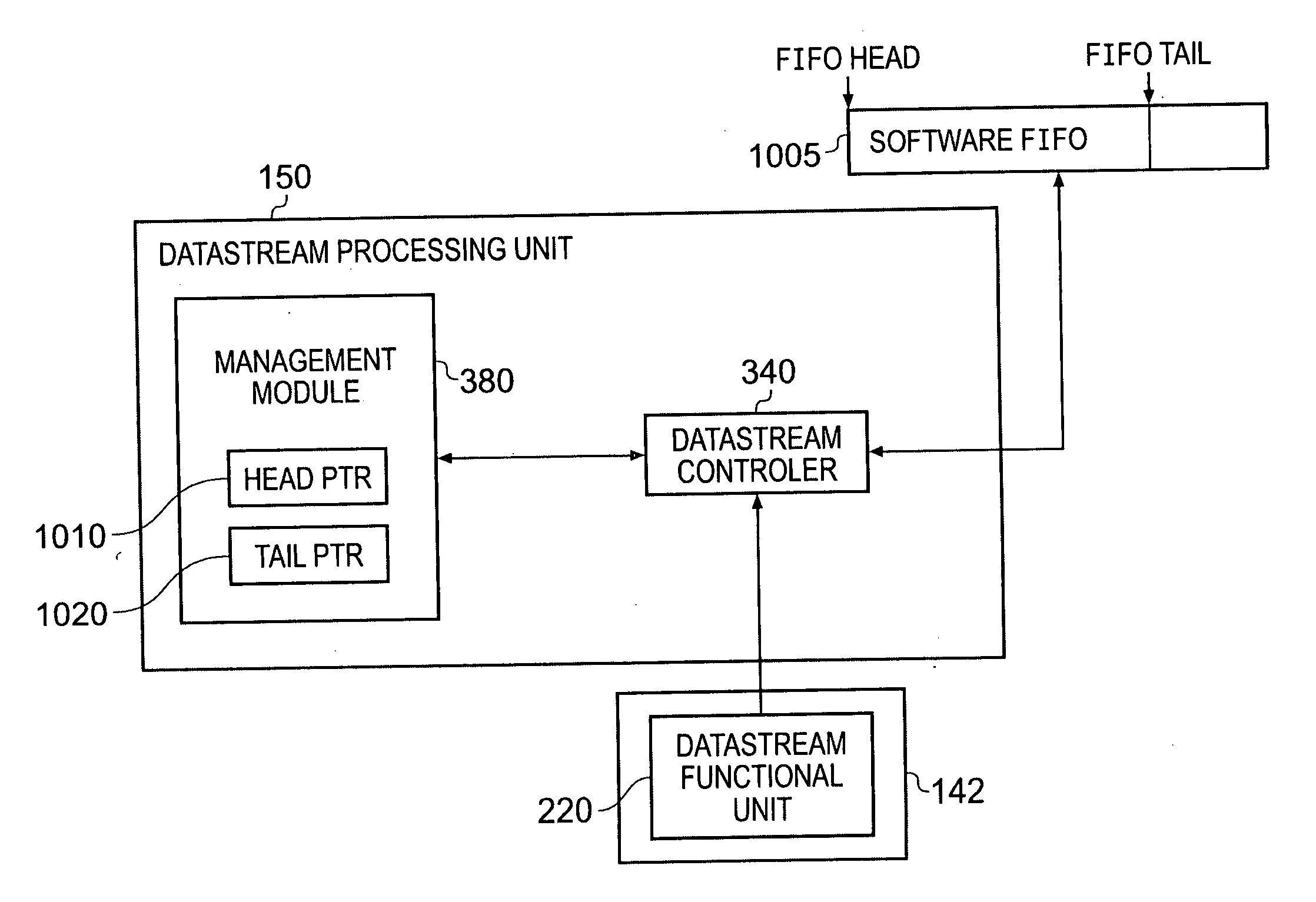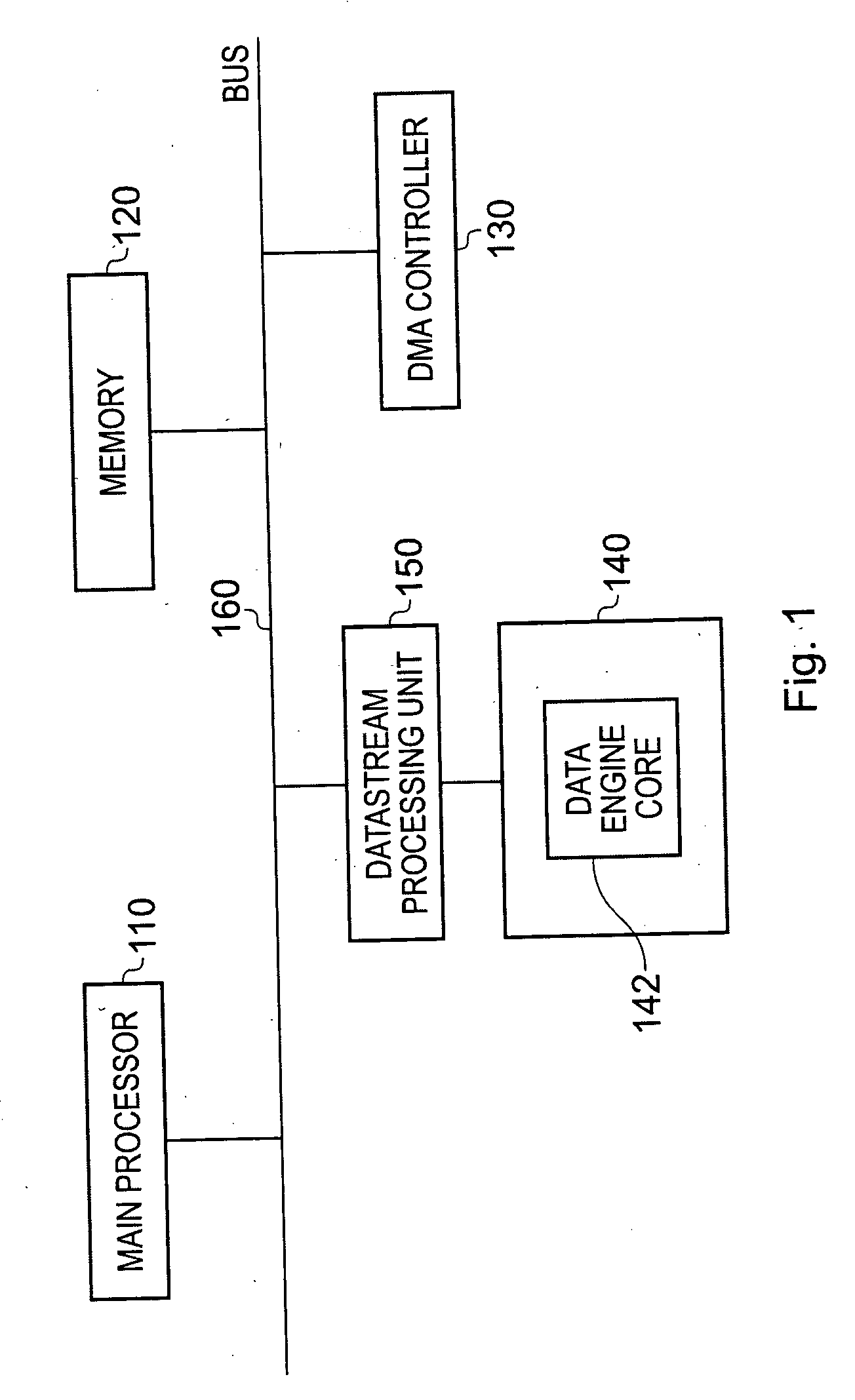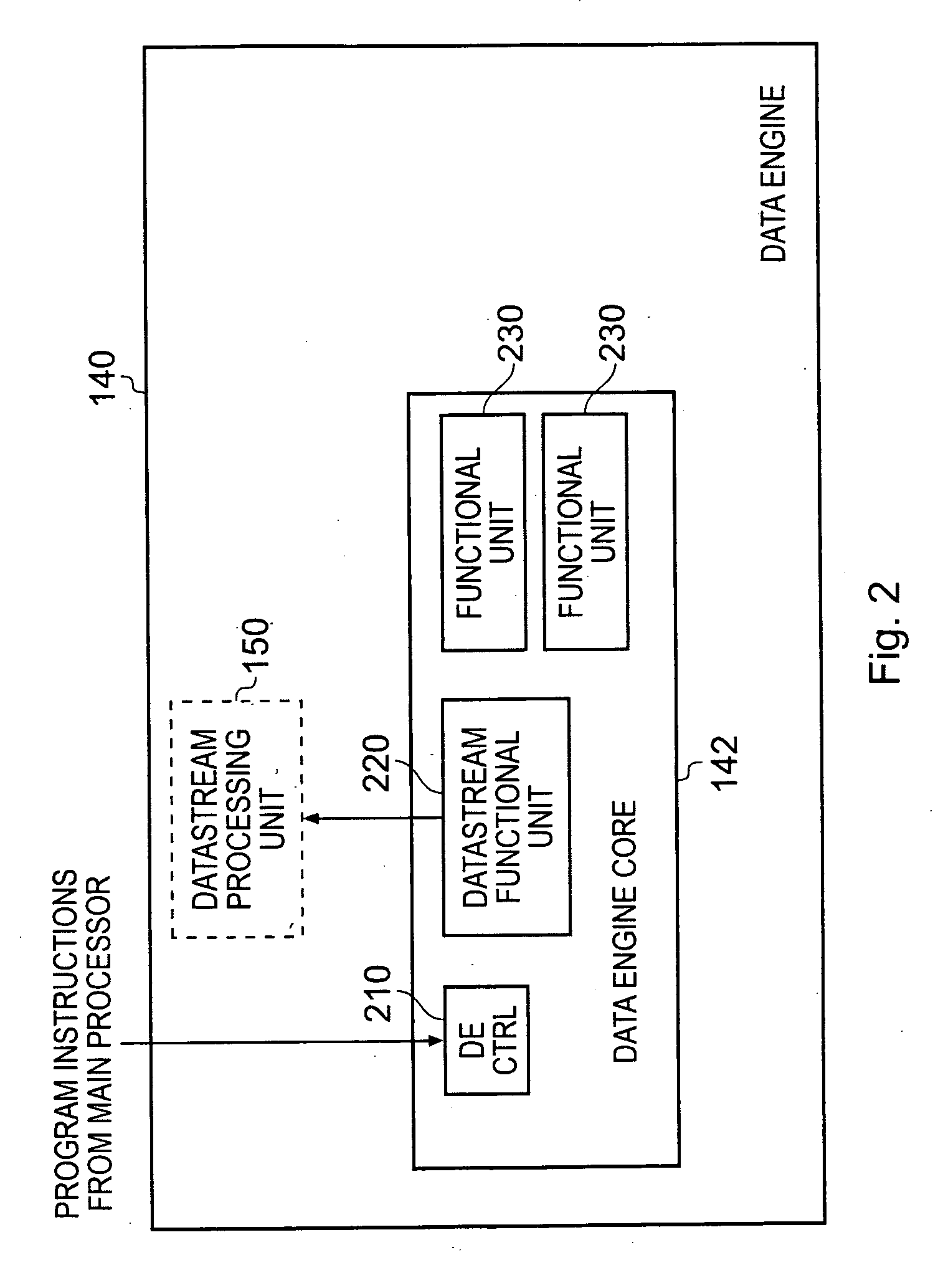Data processing system
a data processing system and data processing technology, applied in the field of data processing, can solve the problems of time-consuming and inefficient data processing, data processing system burden on the programmer, time-consuming explicit data handling, etc., and achieve the effects of facilitating data management operations, reducing processing burden on the main processor, and improving efficiency
- Summary
- Abstract
- Description
- Claims
- Application Information
AI Technical Summary
Benefits of technology
Problems solved by technology
Method used
Image
Examples
application example
MP3 Application Example
[0235] An ISO / IEC-compliant MP3 decoder algorithm was compiled for the AudioDE in order to establish a performance proof point. This algorithm has two distinct aspects. First, the bit-stream decode and dequantise functionality, followed by stereo processing and a large two-stage synthesis filter bank.
[0236] The first part of the code employed the rich AudioDE bit-stream access API. This resulted in simple, compact and very efficient code. The second part of the algorithm was organised to take advantage of the high radix processing capability of the AudioDE. For both sections C-code was used as the source language.
[0237] The resulting algorithm required 8 MHz cycles for a stereo signal sampled at 48 KHz, from a 320 Kbit / s bit-stream. This code used 22 KByte program memory and 22 Kbyte data memory. Deploying the power saving techniques mentioned in section 0, yielded a 42 Kgate core with a power consumption of 0.1 mW / MHz on 0.13% CMOS at 1.2V using ARM's Physi...
PUM
 Login to View More
Login to View More Abstract
Description
Claims
Application Information
 Login to View More
Login to View More - R&D
- Intellectual Property
- Life Sciences
- Materials
- Tech Scout
- Unparalleled Data Quality
- Higher Quality Content
- 60% Fewer Hallucinations
Browse by: Latest US Patents, China's latest patents, Technical Efficacy Thesaurus, Application Domain, Technology Topic, Popular Technical Reports.
© 2025 PatSnap. All rights reserved.Legal|Privacy policy|Modern Slavery Act Transparency Statement|Sitemap|About US| Contact US: help@patsnap.com



